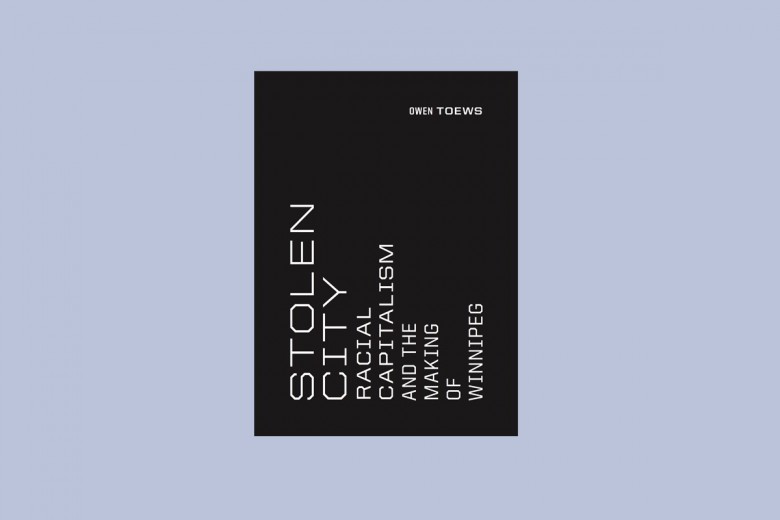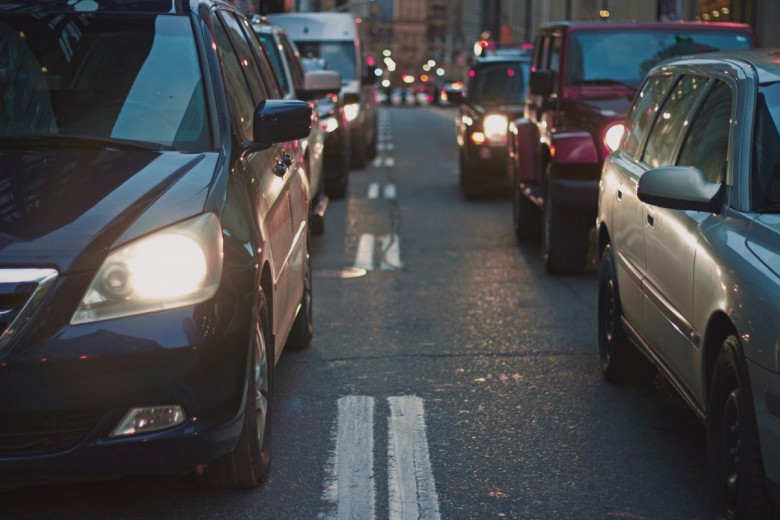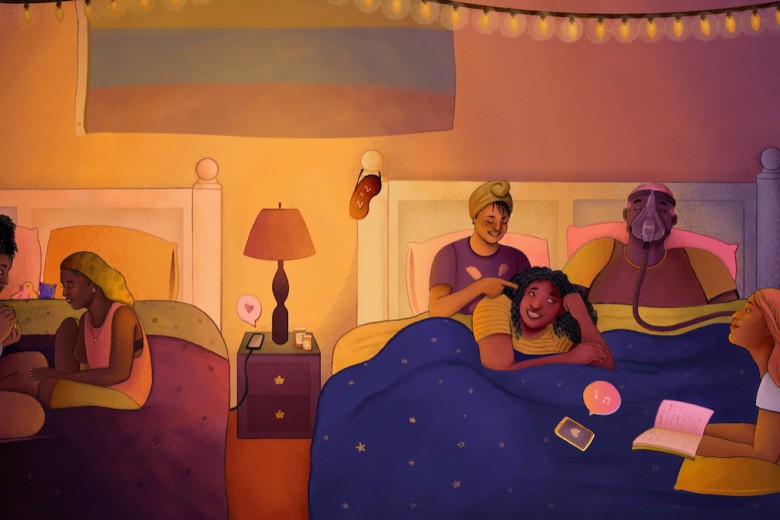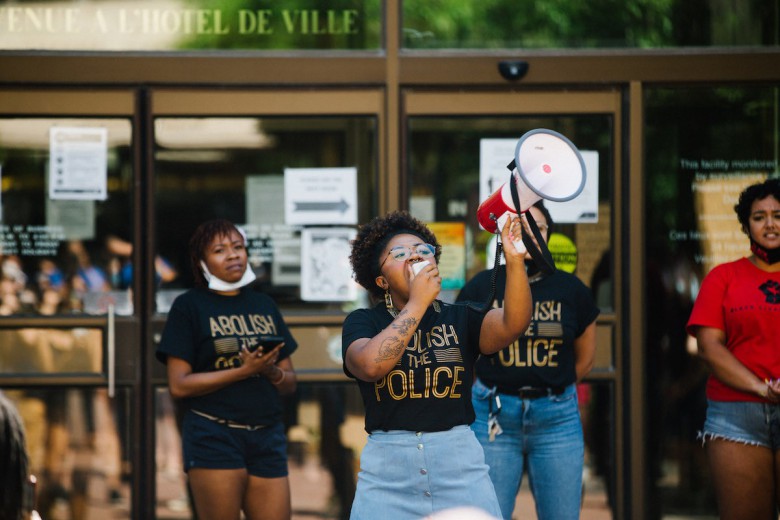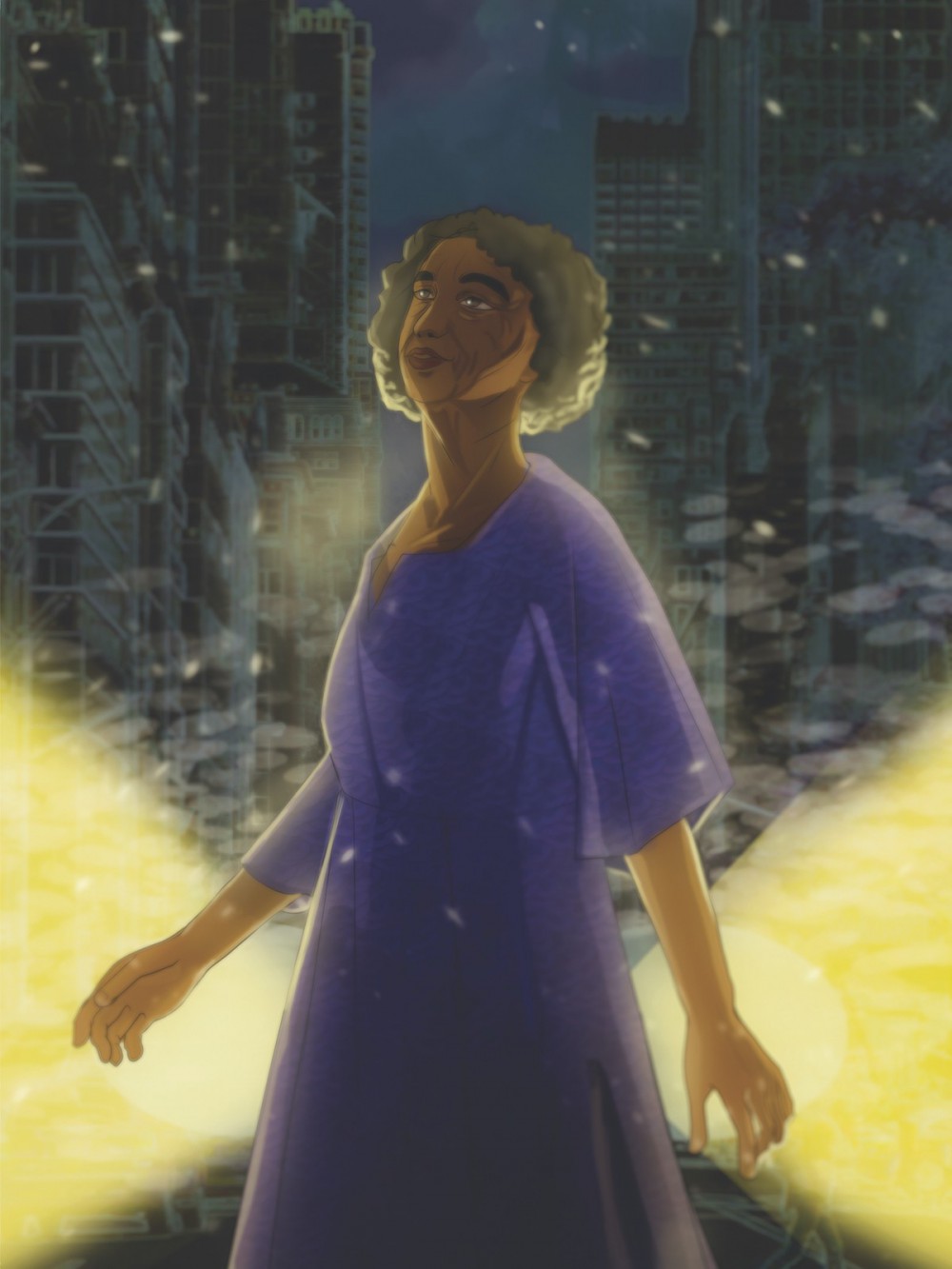
Amani Omar
Plain language summary (What is this?)
- After my mother was diagnosed with Alzheimer’s disease – a disease that affects a person’s memory, thinking, and behaviour – I became her caregiver. My mother and I are both black Muslim women. On our daily walks, I notice that the city we live in is dangerous and confusing for her to walk through.
- This is not an accident. It is a deliberate part of how cities are designed. Many cities in North America were designed by urban planners who discriminated against poor people, disabled people, and people of colour.
- In the 1800s and 1900s, urban planners wanted to destroy areas where poor, black, and brown people lived. They said these areas were bad for the health of the city. They built highways through these areas, which forced residents to move outside the city or forced them to live in polluted neighbourhoods. This still happens today.
- Living in these neighbourhoods makes people sick, and also makes life harder for disabled people. Studies show that people living near heavy traffic have a higher risk of developing dementia.
- There are activists and groups working to make cities safe, accessible, and welcoming for everyone. Together, we are making sidewalks wider, building housing for black and Indigenous people, and sharing info on where to find public bathrooms.
In 2017, after my beautiful mother, Fadhumo, a joyful and brilliant soul, was officially diagnosed with Alzheimer’s, I became her caregiver. My mother and I were blessed with dedicated time with each other – one of the most important aspects of which was our daily walk. While taking those walks, I had a lot of time to think about mobility inequity – both from the perspective of a daughter caring for her disabled mother and as an urban planner.
As two black Muslim women, I can tell you that it is rarely safe and never pleasant or easy for us to ask for assistance or even consideration when we’re in public places. This includes streets, malls, transit stations, restaurants, airports, and even hospitals. In the field of urban planning, we are long overdue for a conversation about the systemic racism, classism, and ableism that has led to the development of deeply inequitable cities – cities that we are forced to navigate every day of our lives.
Unsafe and unwelcome streets
Since the 1800s, major road infrastructure has been constructed primarily to propel European settlers and their property across North America. The passage of the 1853 Public Lands Act meant that colonization roads were built across 1,600 kilometres of what is now Ontario and Quebec, decimating Indigenous communities, forests, and land to move predominantly European settlers onto “free” plots of land they could farm, spatially segregate, and “add value to.” Later, Indigenous Peoples would be further displaced by government right-of-way projects in the form of major roadways and highways that were frequently designed to intersect their homes and reserve lands, dividing them up and further reducing their usable space.
By the 1950s, major road infrastructure was being built in the name of the “public good” and “to cure city ills.” Urban planning pioneers such as Robert Moses and Harland Bartholomew proposed the idea of using infrastructure, primarily highways, to “redeem” urban areas. This idea of “urban renewal” took hold in cities across North America – like Vancouver, where Bartholomew put his ideas into practice – and it came with a two-pronged approach of developing automobile infrastructure mostly in the form of major roadways and highways while eliminating what urban planners called “slums.” “Slums” often described racialized, working class, and immigrant neighbourhoods in the heart of downtown with greater density, multifamily units, and greater social cohesion. These urban renewal planners in the 1940s and ’50s thought of cities as if they were human bodies, and they thought that slums were a disease that had to be cut out with the scalpel of a highway.
We saw this exact scenario play out right here in Metro Vancouver, with the former Hogan’s Alley working-class neighbourhood, which was the first and last substantial congregated black community that existed in British Columbia. It was home to vibrant black and immigrant culture: blues musicians, “chicken house” restaurants, black churches, and the residential quarters of the first black railway union in North America all found a home in the Alley. The community was formed as a result of policies that barred black and Asian people from buying land or renting homes in white neighbourhoods. But in 1950, Vancouver social scientist Leonard Marsh published a plan that described Hogan’s Alley as a “slum” in need of “urban renewal.” In the 1960s, it was razed by the City of Vancouver so that the city could build the Georgia and Dunsmuir Viaducts, the first stage of a planned eight-lane freeway. The freeway was never completed because of opposition from neighbouring communities, but it was too late to save Hogan’s Alley.
These urban renewal planners in the 1940s and ’50s thought of cities as if they were human bodies, and they thought that slums were a disease that had to be cut out with the scalpel of a highway.
Highways have long been an important tool in racist “revitalization.” Not only were they used to destroy the homes, communities, and local businesses of Indigenous and black people, in many cases highways pushed these people further out of the city core. Planners and engineers built highway bridges too narrow for sidewalks and with crossbeams too low for buses – design tactics explicitly chosen to gatekeep parts of the city from pedestrians and bus riders, people deemed too poor to own cars. For example, in New York City, Moses ordered bridges on the Southern State Parkway to be constructed too low to allow buses to pass underneath, stopping poor black and Puerto Rican people from spending time at the nearby Jones Beach.
As a result, exclusionary and expulsive design standards – disguised as “scientific” engineering and urban planning – spread across North American cities, either displacing or penning in poor, Indigenous, and black communities.
Pollution and dementia
These standards, naturally, impact people’s health. In a population-based cohort study of Ontarians, a team of researchers found that living close to heavy traffic is associated with an increased risk of dementia. This research is further underscored by a growing body of evidence showing that women, poor, and racialized people are disproportionately impacted by Alzheimer’s – which means not only do they see higher rates of the disease, they also experience earlier onset and more acute symptoms.
In the U.S., too, black people are 1.5 to 2 times more likely than white people to develop Alzheimer’s and related dementias but are less likely to be diagnosed despite having more severe symptoms. In a 2020 study, among people who donated their brains to research and whose brains exhibited signs of Alzheimer’s, the people who had lived in the poorest neighbourhoods had the highest rate of Alzheimer’s signs.
And early studies suggest that Indigenous people in North America have an increased risk and earlier onset of Alzheimer’s – perhaps due to the impacts of colonization, intergenerational trauma and environmental pollution in their local communities. New studies are also looking at possible Alzheimer’s-like changes to the brains of people who have had COVID-19.
In other words: when urban reformers built highways through poor black and Indigenous communities in the name of “curing city ills,” they were actually the ones making us sick.
Today, planning and zoning policies tend to approve new affordable housing and multi-family developments (meaning, anything that’s not a single-family home) near highly polluting arterial roads with poor walkability. California, for example, has subsidized the construction of affordable housing next to Interstate 5 in Los Angeles, contravening the California Air Resources Board’s recommendation that housing should not be built within 500 feet of a freeway. These environments can be dangerous, confusing, and unnavigable for people with dementia. They can increase exposure to air pollution, while worsening symptoms in people with Alzheimer’s. Studies have shown that people living in walkable neighbourhoods had better memory and cognition, while people living in socio-economically disadvantaged neighbourhoods had poorer cognition.
In other words: when urban reformers built highways through poor black and Indigenous communities in the name of “curing city ills,” they were actually the ones making us sick.
Navigating the city
Despite the fact that over half a million Canadians are living with Alzheimer’s or another dementia, the disease remains a mystery to many of us. Alzheimer’s is a progressive and degenerative neurocognitive disorder caused by physical changes in the brain. As the disease affects each area of the brain, people with Alzheimer’s begin to experience the loss of certain functions and abilities. In caring for my mother on a daily basis, I have watched her navigate varying symptoms that included changes in mood and behaviour that were often out of character. These symptoms gradually worsen over time, greatly hindering a person’s ability to carry on day-to-day activities and live independently.
Alzheimer’s and other dementias are not just a part of normal aging. Even though many people with early-onset Alzheimer’s are simply not diagnosed because of misdiagnosis and stigma, the proportion of people with Alzheimer’s diagnosed before the age of 65 is just an estimated 2 to 8 per cent. My mother is included in that population.
My mother has always been very connected to her community. For most of her life she chose not to drive, preferring public transport and walking. I remember when I was a child, she did everything by walking or using the bus and subway – getting us from home to school to daycare to the grocery store – and it taught me the importance of mobility independence. It also allowed her to meet and talk to neighbours on her trips around town. In our community, she was known as the go-to person for newcomers who needed to learn how to use city services and public transit. However, since my mother’s diagnosis, being on the streets and navigating our community has become a terrifying and overwhelming endeavour for her.
It was clear that people like us weren’t considered when this street was designed.
Several years ago, my mother and I were crossing the street at a major intersection near our home, to get to the library. After waiting at the crosswalk for quite some time, the light changed and we finally began to cross the street. But a driver that was making a right turn also seemed to be using the crosswalk countdown as a way to race through traffic. He blared his horn and yelled that we were walking too slowly and could be killed. Once we got to the other side we were shaken up and wanted to sit down – but there weren’t any benches or resting places in sight. It was clear that people like us weren’t considered when this street was designed.
Those living with Alzheimer’s tend to have difficulty judging the passage of time and distance. They also begin to move more slowly, with shorter strides and difficulty maintaining a steady gait. In Canada, 63 per cent of pedestrians killed at intersections are 65 or older. Figures like these should be considered nothing less than a public health scandal.
In many intersections, city traffic engineering standards prioritize cars through signal phasing that provides drivers with 33 seconds to cross. Meanwhile, pedestrians – who move slower than cars – have just 23 seconds of a green “walk” signal followed by 10 seconds of a flashing red “don’t walk” signal. Crossing the street should not be a privilege afforded to those who can move quickly. Everyone – children, elders, people with visible and invisible disabilities – should be able to cross the street safely and comfortably.
When poor racialized people are evicted to build a highway, made disabled by pollution, displaced to the periphery as their affordable homes in navigable communities are demolished and replaced by luxury market developments, and then killed while crossing the road, some people act like it is inevitable – like there was nothing that could have been done to keep them housed and safe. After all, the societal and policy perception is that they’re disposable anyway. But there is plenty that could be done. And if we drag our feet any further on fixing the racist, classist, ableist built environment in our cities, all but the wealthiest among us will continue to suffer the consequences of climate disaster, housing insecurity, air pollution, and traffic fatalities.
Imagining an accessible city
There are already many grassroots groups and individuals working to make just, anti-racist, accessible cities a reality.
Today in Hogan’s Alley, the viaducts are still up – but thanks to the efforts of community storytellers, advocates, and organizations, the lives of past and present black residents are being celebrated and supported. In 2019, a new supportive housing project geared toward black and Indigenous people opened in the neighbourhood – it was named after black community organizer Nora Hendrix and is managed by the Hogan’s Alley Society (an organization for which I am on the board of directors).
In Toronto, activist Michael DeForge created the Twitter account @totoiletcodes, which crowdsources and shares access codes for over 250 bathrooms around the city. Free and easy access to bathrooms is absolutely crucial for many unhoused, elderly, and disabled people. “We thought it was pretty unfair that the cost of using facilities that fulfil very basic human needs would come with a $5 price tag for a muffin we didn’t want to eat,” DeForge told the Toronto Star.
Imagine communities and homes that support people to not only age in place but also allow them the right to fall ill, adapt, and change in place.
In my own work as a city and regional planner, I’ve contributed toward more just, human-centric infrastructure and connected communities, including planning and designing affordable mixed-income housing projects that integrate non-profit housing, affordable childcare, and bicycle-sharing facilities. In New Westminster, the city where I live and worked during the height of the COVID-19 pandemic, I worked in community to advocate for the removal of buttons that pedestrians must push in order to beg to cross the street. These buttons contribute to spreading illnesses, are often out of reach for disabled pedestrians, and exist mainly to minimize the amount of time cars “lose” in letting people cross the street. As a result, the city introduced crosswalk signals that would change automatically. The city also expanded the width of some sidewalks, making them more accessible and allowing pedestrians to social distance.
During the 2021 British Columbia heatwave, the Vancouver City Planning Commission led an initiative spearheaded by Commissioner Gabrielle Peters and myself to push for immediate, short-term, and long-term supports for those made most vulnerable to extreme weather. This resulted in the City of Vancouver updating its building codes to mandate cooling options – a life saving utility – in new affordable housing developments by 2025. Even so, more immediate actions – such as distributing cooling units to low-income populations most affected by climate disasters, as we’ve seen in other Pacific Northwest jurisdictions like Portland – need to occur.
Imagine shaping communities around the needs and desires of those with visible and invisible disabilities. Imagine accessible multi-family housing integrated within single-family neighbourhoods, rather than separated out to serve as pollution filtration systems for rich neighbourhoods. Imagine cities with climate adaptations – mobile cooling shelters in public spaces, eco-friendly cooling solutions and air purifiers in all new and existing public, mixed-income, and seniors’ housing – in neighbourhoods of poor, black, and brown people. Imagine communities and homes that support people to not only age in place but also allow them the right to fall ill, adapt, and change in place. Imagine that, instead of street sweeps and endlessly increasing already-inflated police budgets, cities reallocate that money to immediately providing unhoused people with permanent homes and the supports they need. Wouldn’t that be human infrastructure and public safety for us all, especially the most marginalized in cities?


